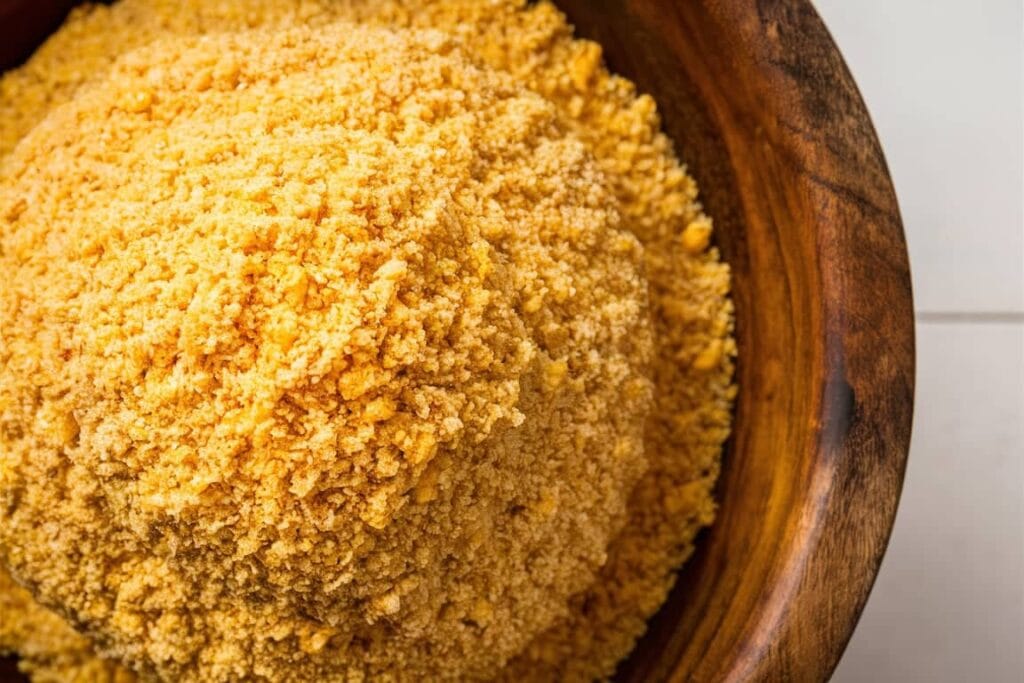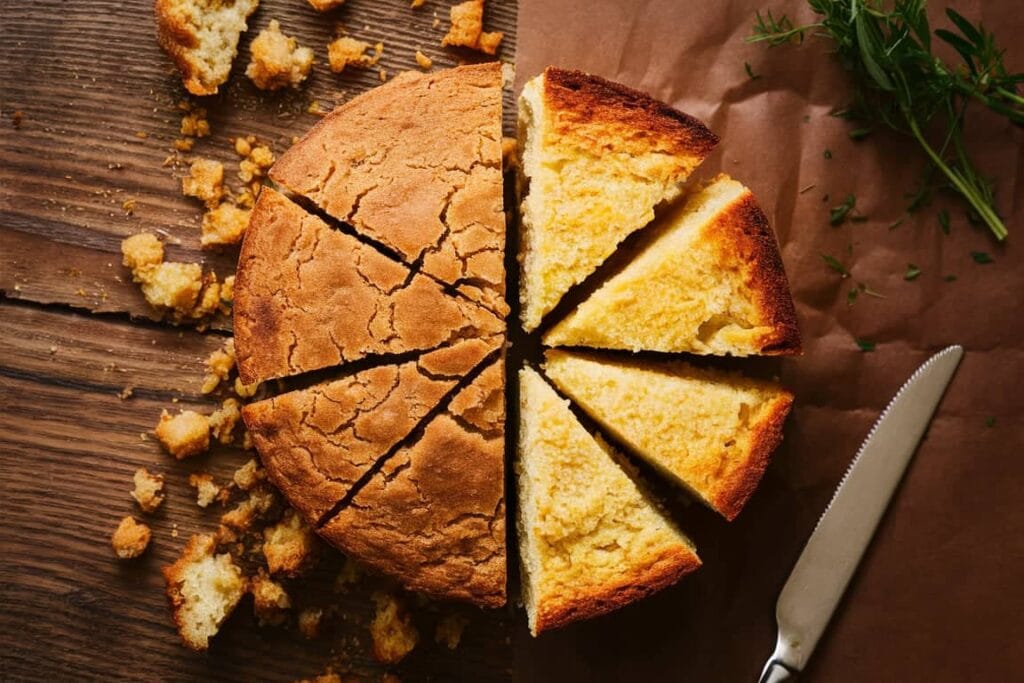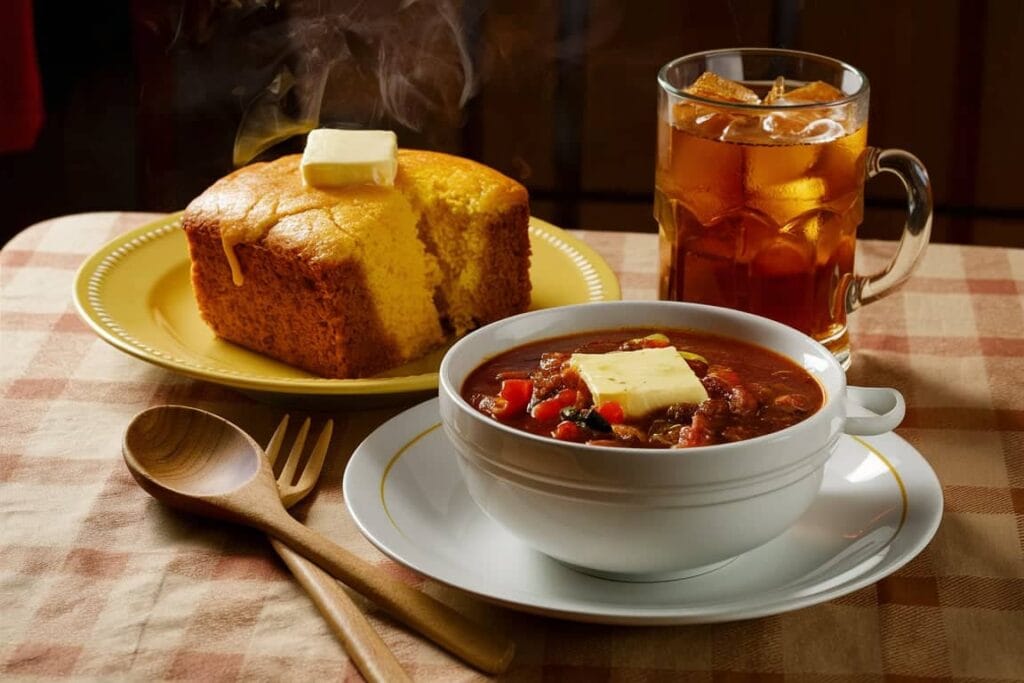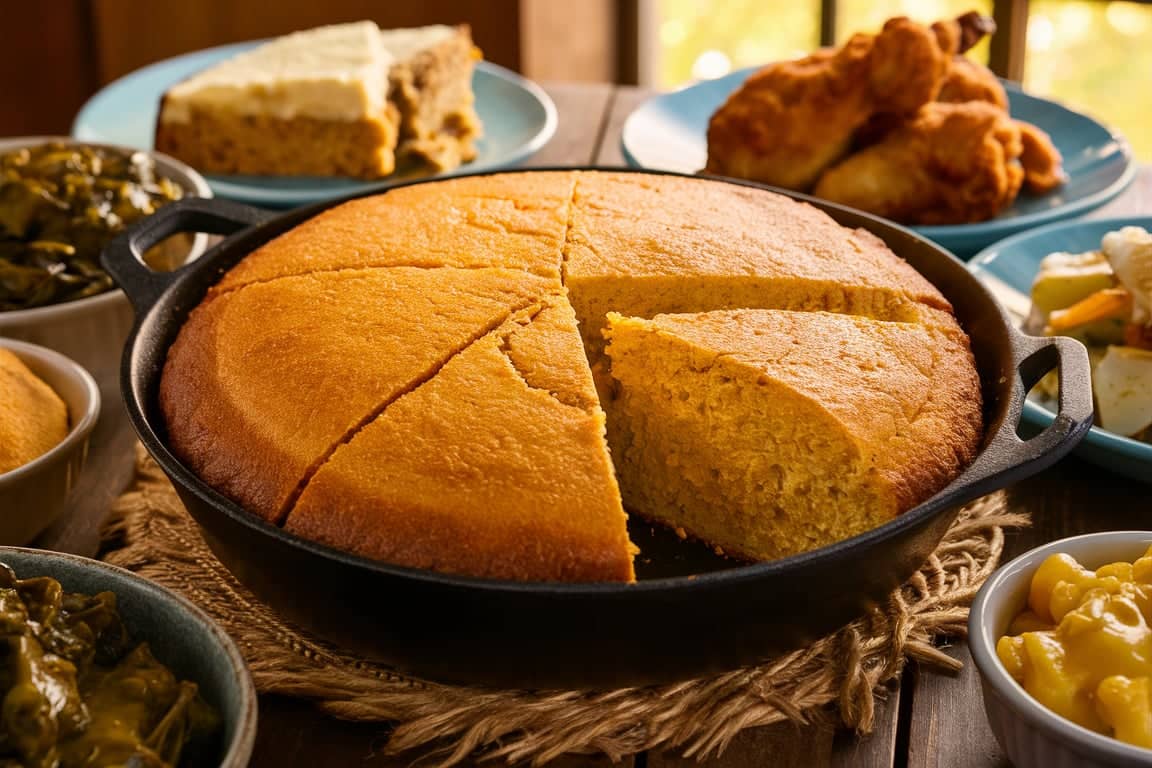When you think of Southern comfort food, what comes to mind? Fried chicken, collard greens, and of course, Southern cornbread. This golden, crumbly bread is more than just a side dish it’s a symbol of Southern hospitality, tradition, and warmth. Whether you’re serving it alongside a bowl of chili or enjoying it with a pat of butter and a drizzle of honey, Southern cornbread is a must-have in any home cook’s repertoire.
But what makes Southern cornbread so special? Why does it have such a devoted following? And how can you make the perfect batch at home? Let’s dive into the world of Southern cornbread, from its rich history to the secrets of baking it just right.
Table of Contents
The History of Southern Cornbread
Origins of Cornbread in the South
Cornbread didn’t start in the South, but it sure found its home there. Native Americans were the first to grind corn into meal and bake it into simple breads. When European settlers arrived, they adopted this practice, and over time, cornbread became a staple in Southern kitchens. Why? Because corn was cheap, easy to grow, and incredibly versatile.
“Cornbread was the bread of necessity, but it became the bread of choice. It’s humble, hearty, and deeply satisfying.” – Southern Food Historian
In the South, cornbread wasn’t just food—it was survival. During tough times like the Civil War and the Great Depression, cornbread kept families fed. It was a symbol of resilience and resourcefulness, and that legacy lives on today.
Cultural Significance of Cornbread in Southern Cuisine
Cornbread isn’t just a food in the South; it’s a cultural icon. It’s served at family gatherings, church potlucks, and holiday feasts. It’s the kind of food that brings people together, evoking memories of grandma’s kitchen or a summer barbecue.
In many Southern households, cornbread is more than a recipe—it’s a tradition. Every family has their own version, passed down through generations. Some like it sweet, some like it savory, but everyone agrees: it’s not a proper Southern meal without a slice of cornbread.
What Makes Southern Cornbread Unique?
Key Ingredients in Southern Cornbread
Southern cornbread is simple, but its ingredients are non-negotiable. Here’s what you’ll need:
- Cornmeal: The star of the show. Southern cornbread uses finely ground cornmeal for a smooth texture.
- Buttermilk: This adds tanginess and moisture, making the bread tender and flavorful.
- Eggs: They bind everything together and give the bread structure.
- Fat: Whether it’s bacon grease, butter, or oil, fat is essential for richness and flavor.
- Leavening Agents: Baking powder and baking soda help the bread rise.
Notice what’s missing? Sugar. Traditional Southern cornbread is savory, not sweet. But more on that later.
The Role of Cornmeal in Southern Cornbread
Cornmeal is the heart and soul of Southern cornbread. It gives the bread its distinctive texture and flavor. But not all cornmeal is created equal. Southern cornbread typically uses white cornmeal, which has a milder flavor than yellow cornmeal. It’s also finely ground, resulting in a smoother, less gritty texture.
“The quality of your cornmeal can make or break your cornbread. Always choose stone-ground cornmeal for the best flavor and texture.” – Southern Chef
Why Southern Cornbread is Typically Savory, Not Sweet
If you’ve ever had Northern-style cornbread, you might be surprised by how different Southern cornbread tastes. Northern cornbread is often sweet, almost like cake. But in the South, cornbread is savory, with just a hint of natural sweetness from the cornmeal.
Why the difference? It’s partly cultural and partly practical. Southerners believe that cornbread should complement savory dishes, not compete with them. Plus, during hard times, sugar was a luxury many couldn’t afford. So, Southern cornbread evolved to be simple, hearty, and savory.
Traditional Southern Cornbread Recipe
Ingredients You’ll Need
Ready to make your own Southern cornbread? Here’s what you’ll need:

- 2 cups stone-ground white cornmeal
- 1 teaspoon baking powder
- 1 teaspoon baking soda
- 1 teaspoon salt
- 1 1/2 cups buttermilk
- 2 large eggs
- 1/4 cup bacon grease or melted butter
Step-by-Step Instructions
- Preheat Your Skillet: Place a cast-iron skillet in the oven and preheat to 425°F (220°C). This step is crucial for that crispy crust.
- Mix Dry Ingredients: In a large bowl, whisk together the cornmeal, baking powder, baking soda, and salt.
- Combine Wet Ingredients: In another bowl, beat the eggs and buttermilk together.
- Combine Wet and Dry: Pour the wet ingredients into the dry ingredients and stir until just combined. Don’t overmix!
- Add Fat: Stir in the bacon grease or melted butter.
- Bake: Carefully remove the hot skillet from the oven and pour in the batter. It should sizzle—this is what creates that golden crust. Bake for 20-25 minutes, or until the top is golden brown and a toothpick comes out clean.
Tips for Perfect Southern Cornbread Every Time
- Use a Cast-Iron Skillet: This is the secret to that crispy crust. If you don’t have one, a baking dish will work, but it won’t be quite the same.
- Don’t Overmix: Overmixing can make your cornbread tough. Stir until the ingredients are just combined.
- Serve Warm: Cornbread is best fresh out of the oven. Serve it with butter, honey, or your favorite Southern dish.
Variations of Southern Cornbread
Skillet Cornbread: The Classic Method
The classic way to make Southern cornbread is in a cast-iron skillet. Why? Because it creates an unbeatable crust. The hot skillet sears the bottom of the bread, giving it a crispy, golden exterior that’s impossible to resist.
Sweet vs. Savory: Regional Differences
While traditional Southern cornbread is savory, there’s a growing trend toward sweeter versions. Some Southern cooks add a tablespoon or two of sugar to the batter, creating a bread that’s somewhere between the classic savory version and the cake-like Northern style. Which is better? That’s up to you!
Adding Mix-Ins: Cheese, Jalapeños, and More
One of the best things about cornbread is how versatile it is. You can add all sorts of mix-ins to customize it to your taste. Try shredded cheddar cheese for a cheesy twist, diced jalapeños for a spicy kick, or even crumbled bacon for extra richness.
Common Problems When Making Southern Cornbread
Even the most experienced bakers can run into issues when making Southern cornbread. But don’t worry—most problems have simple solutions. Let’s tackle some of the most common ones.

Why Did My Cornbread Turn Out Dry?
Dry cornbread is a common complaint, but it’s usually easy to fix. The most likely culprit? Overbaking. Cornbread doesn’t take long to cook, and leaving it in the oven too long can suck out all the moisture.
Another possibility is using too much cornmeal and not enough liquid. The ratio of dry to wet ingredients is crucial. If your batter looks too thick, add a splash more buttermilk before baking.
“Cornbread should be moist and tender, not dry and crumbly. If it’s dry, you’ve either overbaked it or skimped on the buttermilk.” – Southern Baker
How to Fix Crumbly Cornbread
Crumbly cornbread can be frustrating, especially if it falls apart when you try to slice it. This usually happens when there’s not enough binding agent (like eggs) in the batter.
To fix this, make sure you’re using enough eggs—typically 2 large eggs for a standard recipe. You can also try adding a bit of flour to the batter. While traditional Southern cornbread is flourless, a small amount (about 1/4 cup) can help hold everything together.
Avoiding a Dense or Gummy Texture
Nobody likes dense, gummy cornbread. This problem often stems from overmixing the batter. When you overmix, you develop too much gluten (even in a flourless recipe), which can make the bread heavy and tough.
The solution? Mix the batter until the ingredients are just combined. A few lumps are fine—they’ll work themselves out in the oven. Also, make sure your leavening agents (baking powder and baking soda) are fresh. If they’re expired, your cornbread won’t rise properly.
Tips for Baking the Perfect Southern Cornbread
Now that we’ve covered the common pitfalls, let’s talk about how to make your cornbread truly shine. These tips will help you bake the perfect loaf every time.
Choosing the Right Cornmeal
The type of cornmeal you use can make a huge difference. For authentic Southern cornbread, opt for stone-ground white cornmeal. It has a finer texture and milder flavor than yellow cornmeal, which is more common in Northern recipes.
If you can’t find white cornmeal, yellow cornmeal will work in a pinch. Just make sure it’s finely ground—coarse cornmeal can make your bread gritty.
The Importance of Preheating Your Skillet
Preheating your cast-iron skillet is one of the best ways to achieve that iconic crispy crust. When you pour the batter into a hot skillet, it immediately starts cooking the bottom layer, creating a golden, crunchy exterior.
If you don’t have a cast-iron skillet, you can use a regular baking dish, but you’ll miss out on that signature crust. Consider investing in a cast-iron skillet—it’s a versatile tool that’s perfect for cornbread, frying, and more.
How to Tell When Cornbread is Done
Knowing when your cornbread is done can be tricky. Overbake it, and it’ll be dry; underbake it, and it’ll be gummy. Here’s how to get it just right:
- Check the Color: The top should be golden brown.
- Use a Toothpick: Insert a toothpick into the center of the bread. If it comes out clean or with a few crumbs, it’s done.
- Listen for the Sizzle: When you remove the skillet from the oven, the bread should sizzle slightly. This means the bottom is perfectly crispy.
Serving Suggestions for Southern Cornbread
Southern cornbread is incredibly versatile. It pairs well with almost any dish, from hearty stews to light salads. Here are some classic and creative ways to serve it.

Classic Pairings: Chili, Greens, and BBQ
Cornbread is the ultimate side dish for Southern comfort food. Serve it with a bowl of spicy chili, a plate of collard greens, or a rack of smoky BBQ ribs. The bread’s savory flavor and crumbly texture complement rich, hearty dishes perfectly.
“Cornbread and chili are a match made in heaven. The bread soaks up the sauce, and the flavors meld together beautifully.” – Food Blogger
Creative Ways to Use Leftover Cornbread
Got leftover cornbread? Don’t let it go to waste! Here are some fun ways to repurpose it:
- Cornbread Stuffing: Crumble it up and use it as a base for stuffing. Add sausage, onions, and herbs for a delicious side dish.
- Cornbread Croutons: Cut the bread into cubes, toss with olive oil, and bake until crispy. Use them to top salads or soups.
- Cornbread Pudding: Turn it into a sweet or savory bread pudding. For a sweet version, add milk, eggs, and sugar; for a savory version, add cheese and herbs.
Healthier Alternatives to Traditional Southern Cornbread
While traditional Southern cornbread is delicious, it’s not exactly health food. If you’re looking for a lighter version, here are some alternatives to try.

Gluten-Free Southern Cornbread
Good news: traditional Southern cornbread is naturally gluten-free! Just make sure your cornmeal is certified gluten-free, as some brands may be processed in facilities that also handle wheat.
If you’re adding flour to your recipe, swap it out for a gluten-free flour blend. The texture will be slightly different, but the flavor will still be amazing.
Low-Fat and Low-Sugar Options
To make your cornbread healthier, try these tweaks:
- Use Less Fat: Instead of bacon grease or butter, use a lighter oil like olive oil or avocado oil.
- Reduce Sugar: If you’re making a sweet cornbread, cut the sugar in half. You’ll still get a hint of sweetness without overdoing it.
- Add Veggies: Stir in grated zucchini or carrots for extra moisture and nutrients.
Frequently Asked Questions About Southern Cornbread
Even after mastering the basics, you might still have questions about Southern cornbread. Let’s tackle some of the most common ones.
Can I Use Flour Instead of Cornmeal?
Nope! Cornmeal is the star of the show in Southern cornbread. Flour can’t replicate its unique texture and flavor. However, some recipes do include a small amount of flour to help bind the bread. If you’re going for authenticity, stick to cornmeal.
What’s the Best Skillet for Baking Cornbread?
A cast-iron skillet is the gold standard for baking Southern cornbread. It heats evenly, retains heat well, and gives the bread that iconic crispy crust. If you don’t have one, a heavy oven-safe skillet or baking dish will work, but the results won’t be quite the same.
How Do I Store and Reheat Cornbread?
Cornbread is best enjoyed fresh, but if you have leftovers, here’s how to store and reheat them:
- Storage: Wrap the cornbread tightly in plastic wrap or aluminum foil and store it at room temperature for up to 2 days. For longer storage, keep it in the fridge for up to a week or freeze it for up to 3 months.
- Reheating: To revive leftover cornbread, wrap it in foil and warm it in a 350°F (175°C) oven for 10-15 minutes. You can also microwave individual slices for 10-15 seconds, but be careful—it can dry out quickly.
Why Southern Cornbread is a Must-Try
The Comforting Taste of Southern Tradition
Southern cornbread isn’t just food—it’s a taste of tradition. Every bite carries the warmth of Southern hospitality, the resilience of generations past, and the joy of shared meals. It’s simple, humble, and deeply satisfying.
“Cornbread is more than a recipe; it’s a connection to the past. It’s the taste of home, no matter where you are.” – Southern Food Enthusiast
How Cornbread Brings People Together
There’s something magical about a basket of warm cornbread on the table. It’s the kind of food that invites conversation, laughter, and togetherness. Whether you’re sharing it with family, friends, or strangers, cornbread has a way of bringing people closer.
Conclusion: Mastering the Art of Southern Cornbread
Southern cornbread is more than just a side dish it’s a celebration of tradition, flavor, and community. With its crispy crust, tender crumb, and savory flavor, it’s no wonder this humble bread has stood the test of time.
Recap of Key Tips and Tricks
- Use stone-ground white cornmeal for the best texture and flavor.
- Preheat your cast-iron skillet to achieve that perfect crispy crust.
- Don’t overmix the batter—a few lumps are fine!
- Serve it warm with butter, honey, or your favorite Southern dish.
Encouragement to Try the Recipe
If you’ve never made Southern cornbread before, now’s the time to try. It’s easy, forgiving, and incredibly rewarding. Whether you stick to the classic recipe or add your own twist, you’re sure to create something delicious.
So, grab your skillet, preheat your oven, and get ready to bake a loaf of Southern comfort. Your taste buds and your family will thank you.

